Why Read This Article?
Finish Nailer Repair - Replacing the Driver Guide (Ridgid Part # 79004001022)
Article Breakdown
Finish Nailer Repair - Replacing the Driver Guide (Ridgid Part # 79004001022)
Tools & Materials
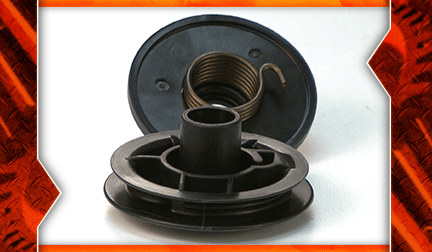

Trimmer out of whack? It's time to face the fix. Whether you are a legendary landscaper or a weekend weed whacker, eReplacementParts.com provides the parts, procedures and facts you need to fearlessly fix what fails you.
Trouble starting your engine? The problem just might revolve around the starter pulley. The starter pulley serves several functions: 1) the starter rope wraps around the pulley; 2) the starter spring attaches to the pulley and retracts the rope after it is pulled; 3) the pulley engages the flywheel when the rope is pulled (in order to start the engine).
Over time, the pulley will wear. Common issues include failure of the pulley (where the starter spring attaches), and wear to the pulley where it contacts the flywheel, causing it to no longer engage.
This article provides step-by-step instructions for removing and installing the starter pulley on a Ryobi string trimmer.
Let's get started.
 REMOVING THE STARTER PULLEY [top]
1. Remove the rear motor housing.
REMOVING THE STARTER PULLEY [top]
1. Remove the rear motor housing.
Remove the screws securing the rear motor housing to the engine.
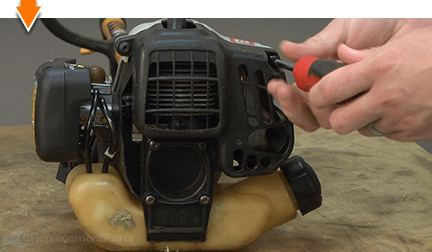
Remove the rear housing from the engine.
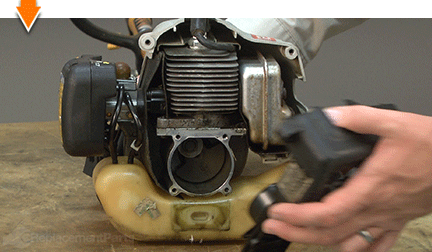
2. Remove the shaft and handle assembly.
Remove the (4) screws securing the shaft and handle assembly to the engine.
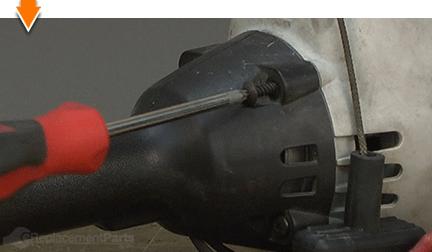
Separate the shaft and handle assembly from the engine.
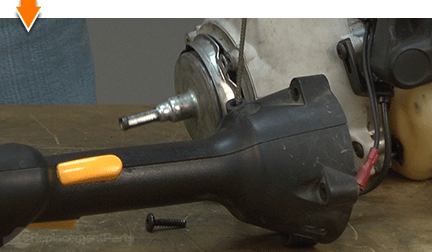
3. Bind the engine (this is necessary to remove the clutch drum).
Disconnect the spark plug boot from the spark plug.
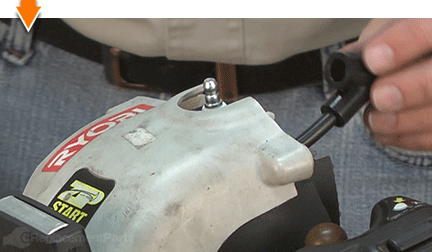
Use a spark plug wrench (or socket) to loosen the spark plug.
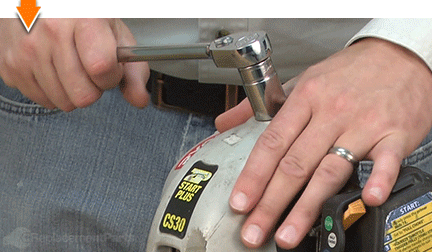
Remove the spark plug from the engine.
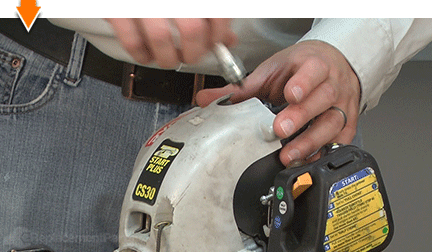
Insert the end of an old starter rope (or similar rope) into the engine cylinder (through the spark plug hole). Continue feeding the rope into the cylinder until the piston is unable to move.
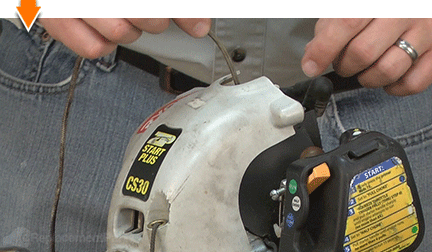
4. Remove the clutch drum.
Loosen the internal screw securing the clutch drum to the shaft.
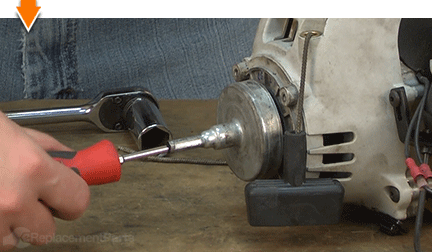
Remove the clutch drum.
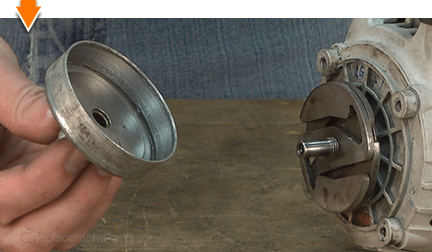
5. Remove the clutch plates.
The two clutch plates are threaded onto the shaft. Each plate needs to be removed individually. To avoid damaging the contact surface of the clutch plates (i.e. the surface that contacts the inside of the clutch drum), the following method should be used.
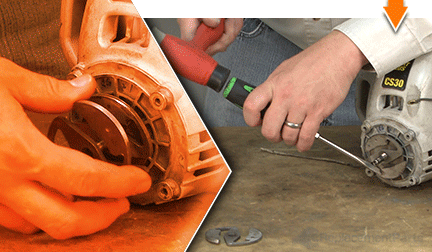
Position the blade of a screwdriver against the inner spoke of the outer clutch plate.
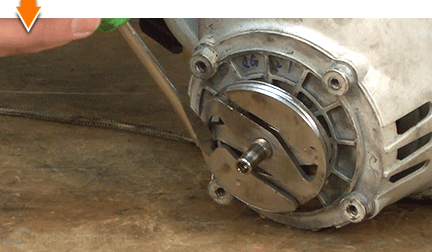
Strike the end of the screwdriver with a hammer to loosen the clutch plate (the plate is threaded onto the shaft).
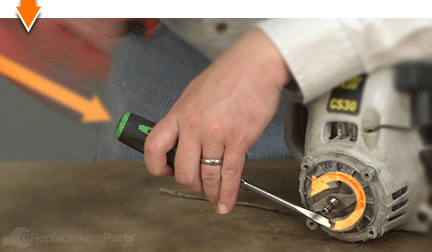
Unscrew and remove the outer clutch plate from the shaft.
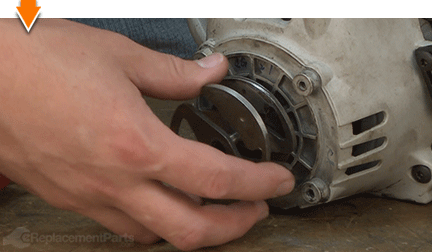
Repeat this step to remove the inner clutch plate.
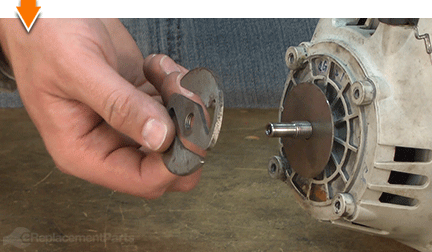
Remove the clutch washer from the shaft.
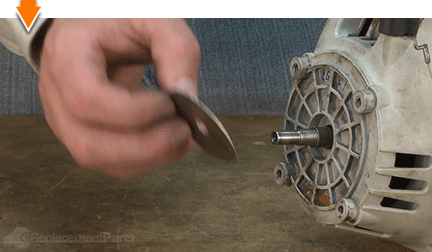
6. Remove the starter housing.
Remove the (4) screws securing the starter housing to the engine.
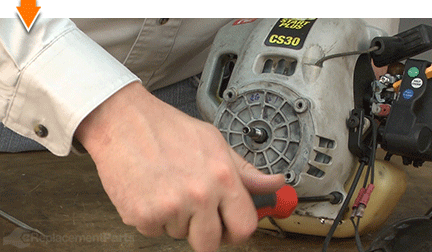
Remove the starter housing from the engine.
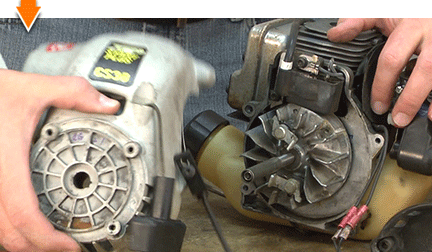
7. Remove tension in the starter spring.
This step mentions two different knots. The first knot refers to a knot that you will tie in the starter rope. The second knot refers to a knot that already exists within the starter grip.
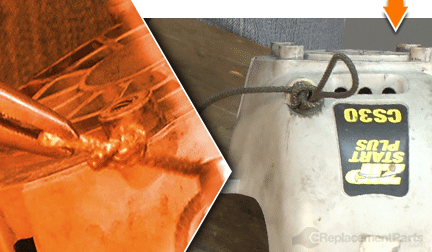
Pull the starter rope out of the starter assembly (about 18-24 inches).
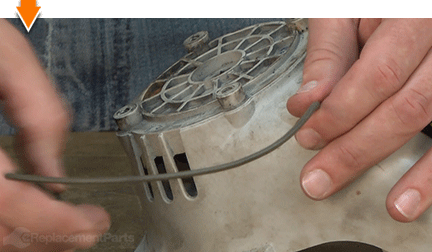
Tie a temporary knot in the starter rope.
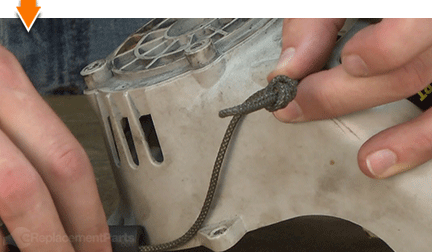
Allow the starter rope to recoil into the starter assembly until the temporary knot engages the external housing.
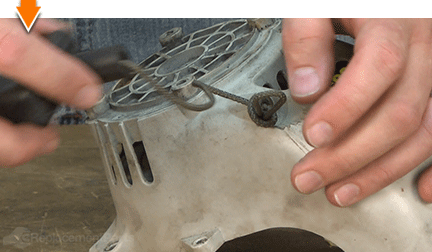
Slide the starter grip away from the (existing) knot in the end of the starter rope (the knotted end may be concealed beneath a plate on the starter grip).
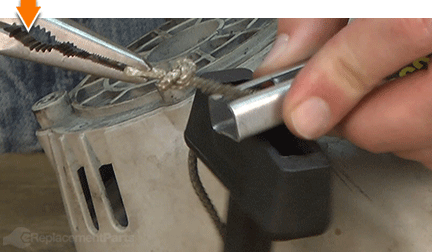
Use scissors or wire clippers to remove the existing knot from the end of the starter rope.
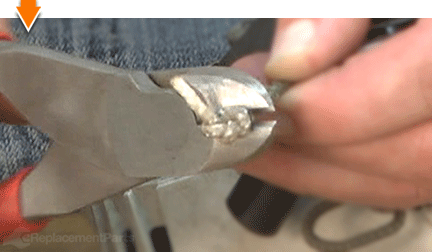
Slide the starter grip away from the starter rope.
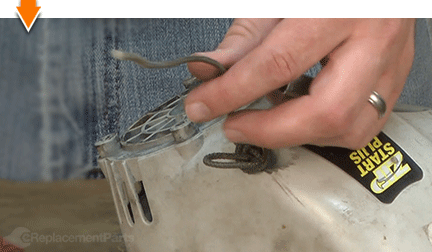
Untie the temporary knot in the starter rope.
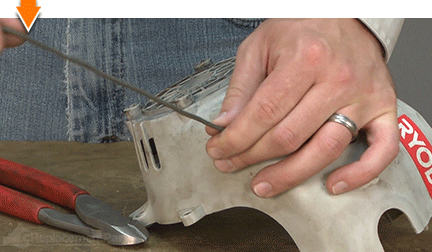
Allow the starter rope to recoil into the starter housing until all of the tension is removed from the starter spring.
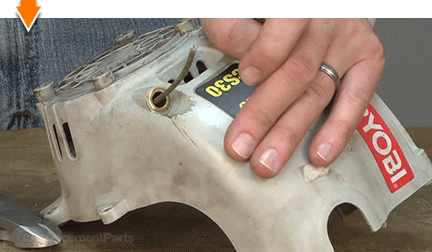
8. Remove the starter pulley.
Remove the (3) screws securing the baffle plate to the starter housing.
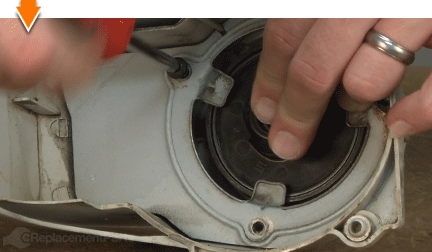
Remove the baffle plate from the housing.
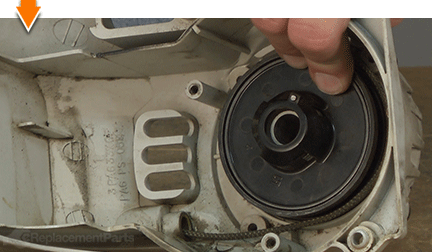
Remove the starter pulley from the housing.
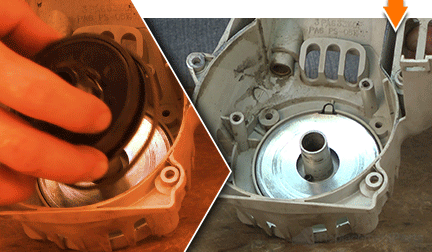
9. Remove the starter rope from the starter pulley.
Remove the top half of the starter pulley.
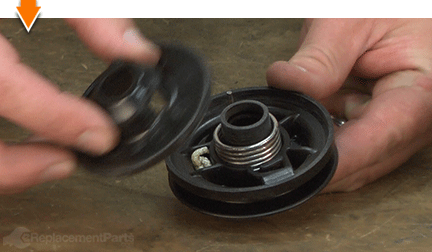
Remove the starter rope from the lower half of the starter pulley.
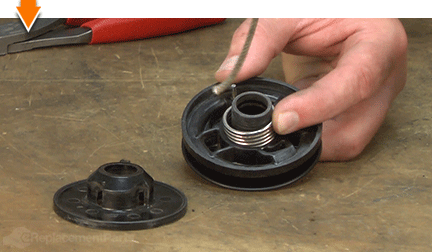
INSTALLING THE NEW STARTER PULLEY [top] 10. Install the starter pulley.
Remove the top half of the new starter pulley.
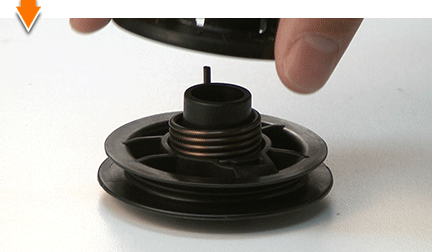
Remove the soft-start spring from the new starter pulley.
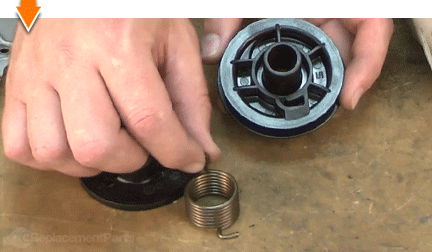
Install the new starter pulley into the housing; ensuring that the slot on the pulley engages the tab on the recoil spring.
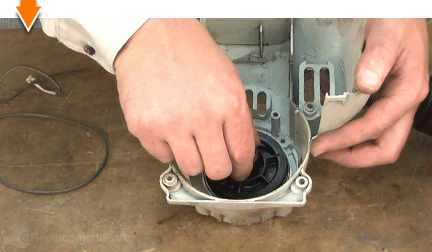
11. Tension the starter spring.
Wind the starter pulley in a clockwise direction while keeping downward pressure on the pulley the entire time. DO NOT RELEASE PRESSURE ON THE PULLEY UNTIL THE BAFFLE PLATE HAS BEEN SECURED WITH THE SCREWS.
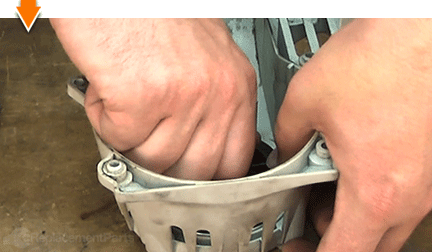
Continue winding the starter pulley until it is no longer able to rotate.
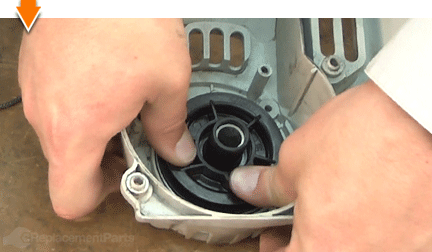
Once maximum tension has been achieved, slowly rotate the pulley in a counterclockwise direction until the opening for the starter rope (on the pulley) aligns with the eyelet on the starter housing.
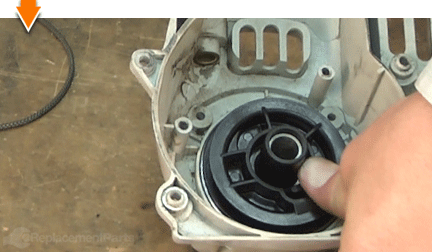
12. Install the starter rope.
Thread the starter rope through the opening in the starter pulley, as well as the eyelet in the starter housing.
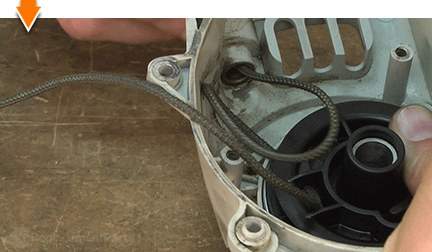
Pull the starter rope (to take up extra slack) until the knot engages the starter pulley.
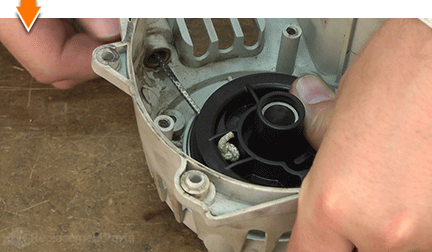
Tuck the knot into the recess in the starter pulley.
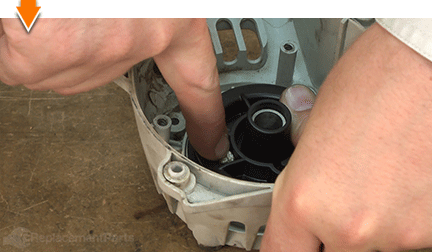
Tie another temporary knot in the starter rope (on the outside of the housing).
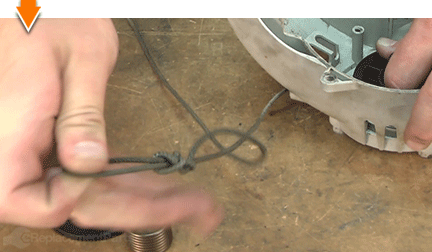
Allow the rope to recoil into the housing until the temporary knot engages the housing.
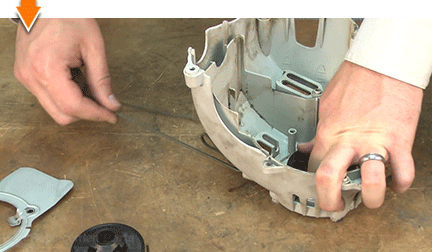
13. Install the top half of the starter pulley.
Install the soft-start spring onto the starter pulley.
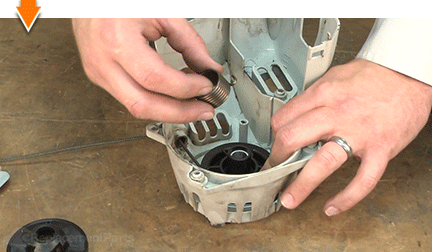
Install the top half of the starter pulley.
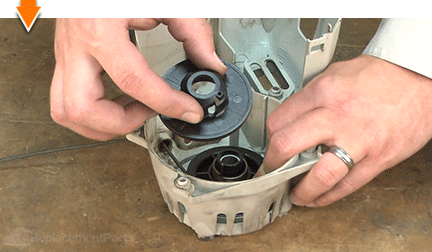
Install the baffle plate.
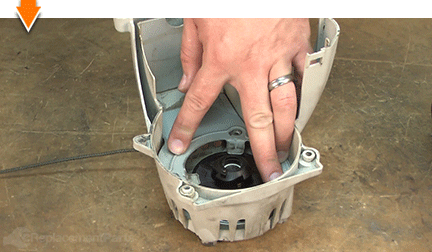
Secure the baffle plate (and pulley) with the (3) screws.
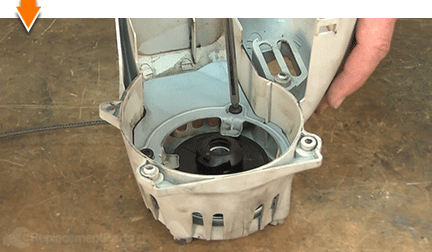
14. Install the starter grip.
Thread the starter rope through the starter grip.
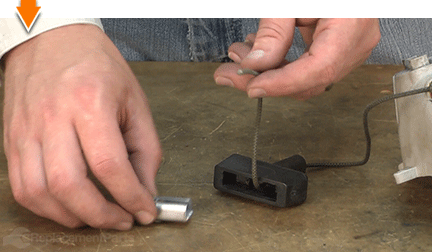
Tie an overhand knot in the end of the starter rope.
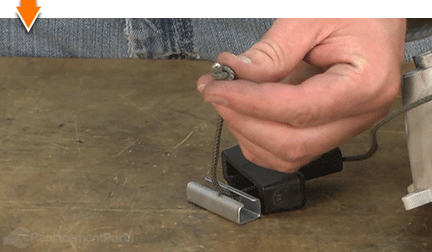
Tuck the knot into the top of the starter grip.
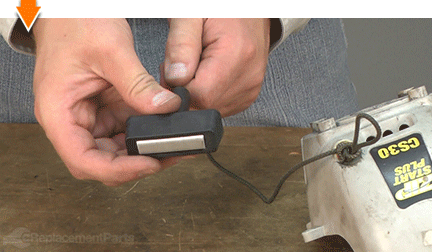
Untie the temporary knot in the starter rope.
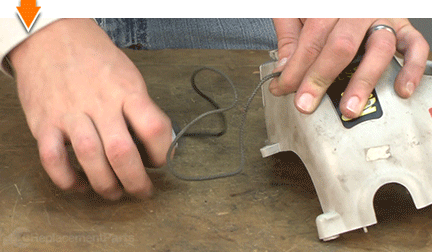
Allow the starter rope to recoil fully into the starter assembly.
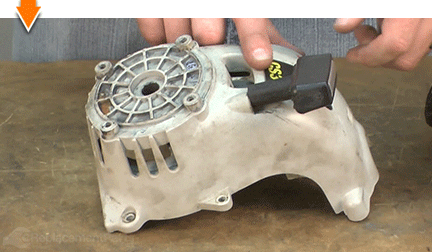
REASSEMBLING THE UNIT [top] 15. Reinstall the starter housing.
Install the starter housing onto the engine.
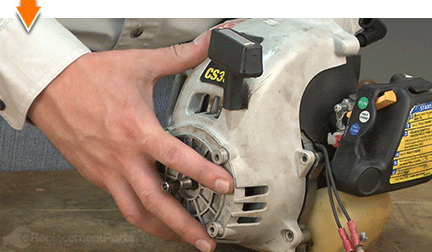
Align the throttle cable bracket with the mounting hole nearest the carburetor.
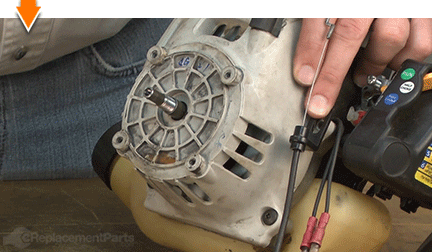
Secure the throttle cable bracket with the screw.
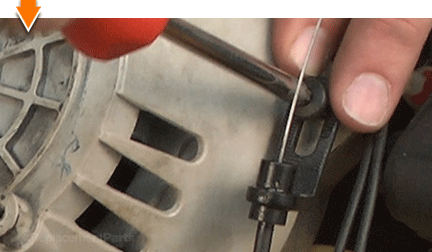
Secure the starter housing to the engine with the remaining (3) screws.
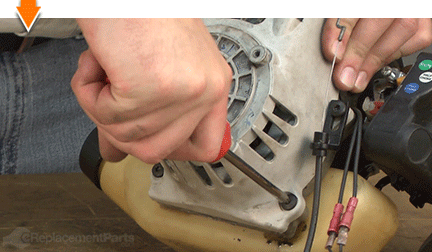
16. Reinstall the clutch plates.
Install the clutch washer.
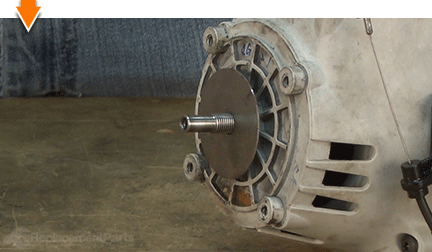
Note that each clutch plate contains a small indent. The indent should face AWAY from the clutch washer.
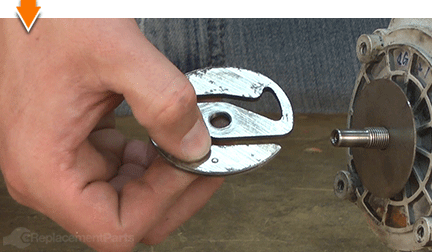
Thread either of the two clutch plates onto the shaft (it does not matter which plate is installed first).
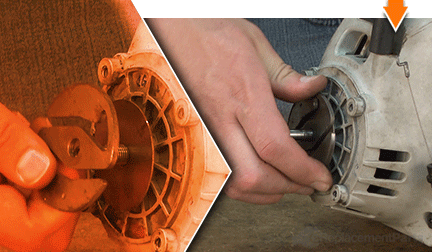
Use long-nosed pliers to partially tighten the clutch plate. (The plates will tighten automatically as the trimmer is used, so it is not necessary to tighten them fully at this point).
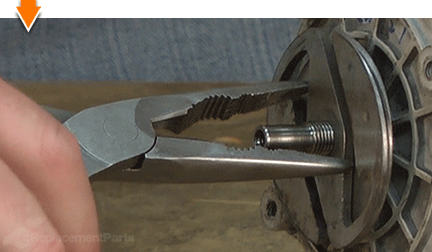
Repeat this step to install (and secure) the second clutch plate.
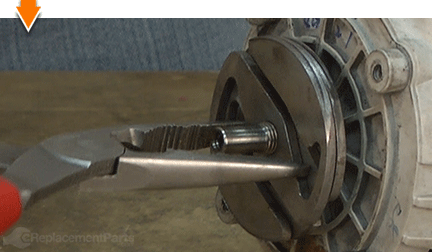
17. Reinstall the clutch drum.
Install the clutch drum over the clutch plates.
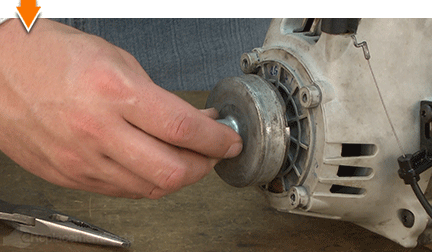
Secure the clutch drum with the screw.
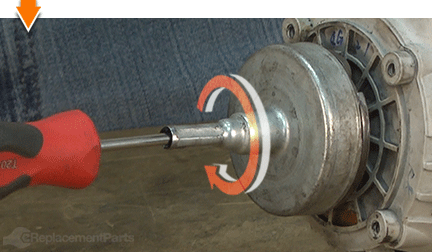
18. Reinstall the spark plug.
Remove the rope from the cylinder.
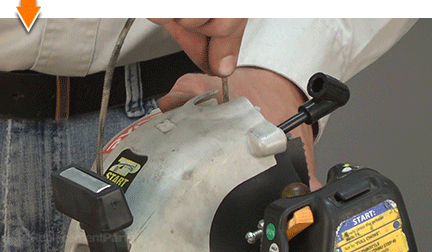
Thread the spark plug into the cylinder.
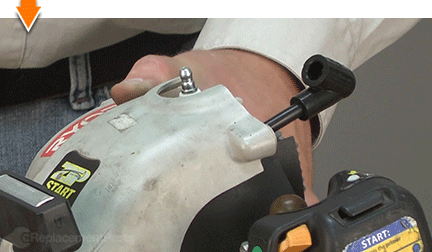
Secure the spark plug using a spark plug wrench or socket.
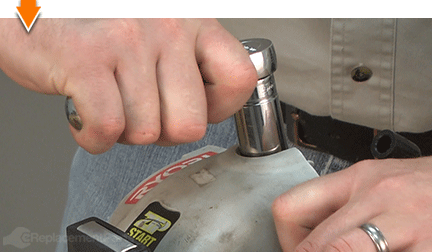
Install the spark plug boot.
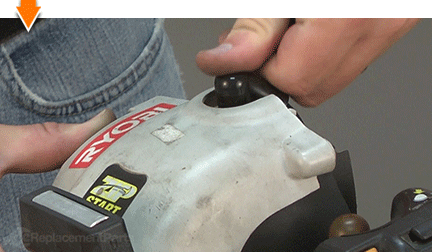
19. Reconnect the throttle cable to the carburetor.
Connect the throttle cable z-connector to the throttle linkage on the carburetor.
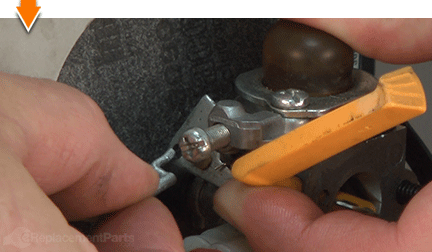
20. Reinstall the shaft and handle assembly.
Install the ring guard and align the mounting holes with the holes on the housing.
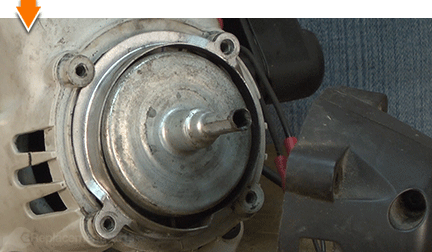
Install the shaft and handle assembly onto the engine; ensuring that the shaft fully engages the clutch drum.
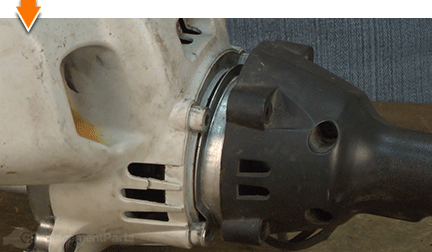
Secure the shaft and handle assembly with the (4) screws.
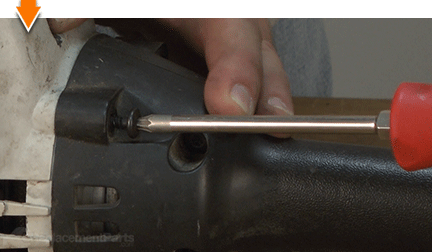
21. Reinstall the rear motor housing.
Align the fuel tank with the rubber bumpers on the engine assembly.
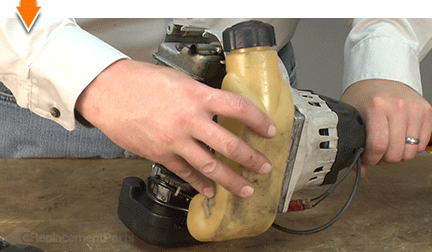
Install the rear motor housing.
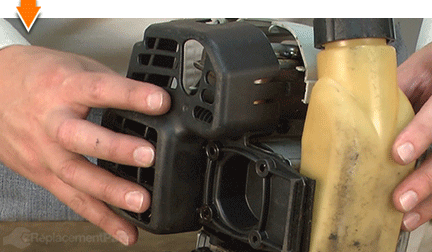
Secure the rear motor housing with the screws.
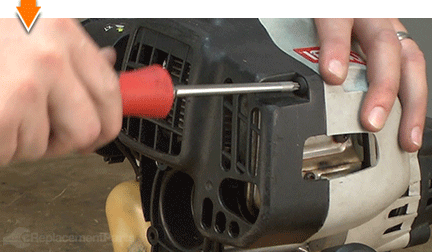

Do-it-yourself repairs like these are easier than you might think: From lawn machines to cordless drills, kitchen mixers to outdoor grills. Our "how-to" articles walk you through each repair from start to finish.
So, doing-it-yourself means never having to do it alone.



















































